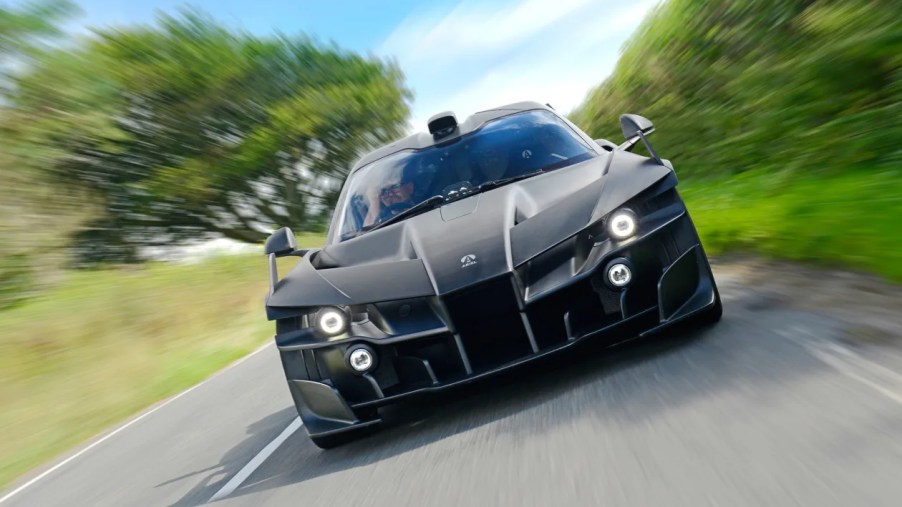
Ariel ‘Hipercar’ EV: 1180 HP With Gas-Turbine Range Extender
Looking more like a Lego car or fanciful render, the Ariel Hipercar (not hypercar) is neither. It is a real, running, all-electric hypercar with 1,180 hp. And if that’s not enough, its range extender comes courtesy of a gas turbine. So what are all of the Ariel Hipercar’s wings and splitters about, and how does the range extender work?
Where will the Ariel Hipercar be made?
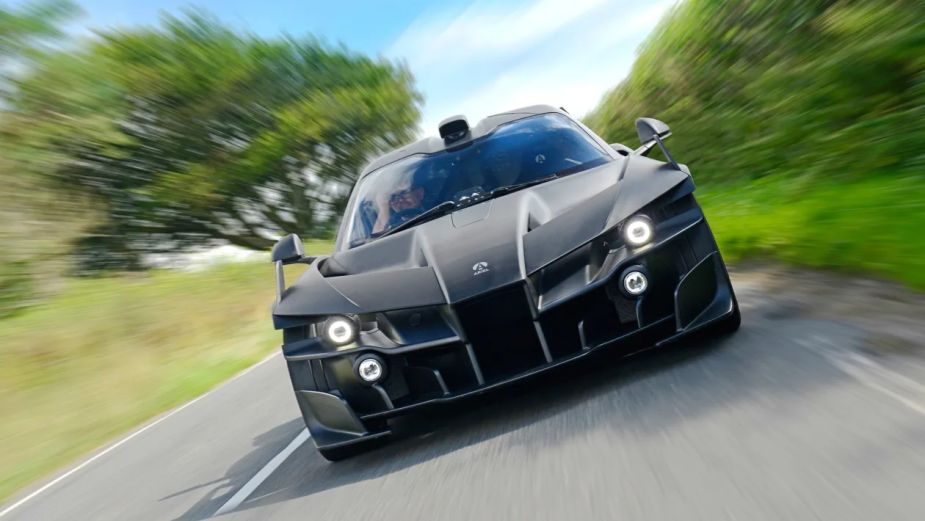
First, the Somerset, U.K. company Ariel announced plans back in 2017 to build a high-performance EV with an extended range. The Atom and the more recent Nomad are what Ariel is more commonly known for. Ariel produces around 100 of the Atom and Nomad, and 25 motorcycles a year.
Hipercar stands for “High-Performance Carbon Reduction,” which broken down means supercar. While still in development, the prototype lends credence to its mission. At 3,430 lbs, it almost weighs what a non-battery vehicle comes in at. And Ariel says it wants to trim it down by production time to 3,000 lbs. As a comparison, the Atom weighs 1,134 lbs.
How many motors does the Ariel Hipercar have?
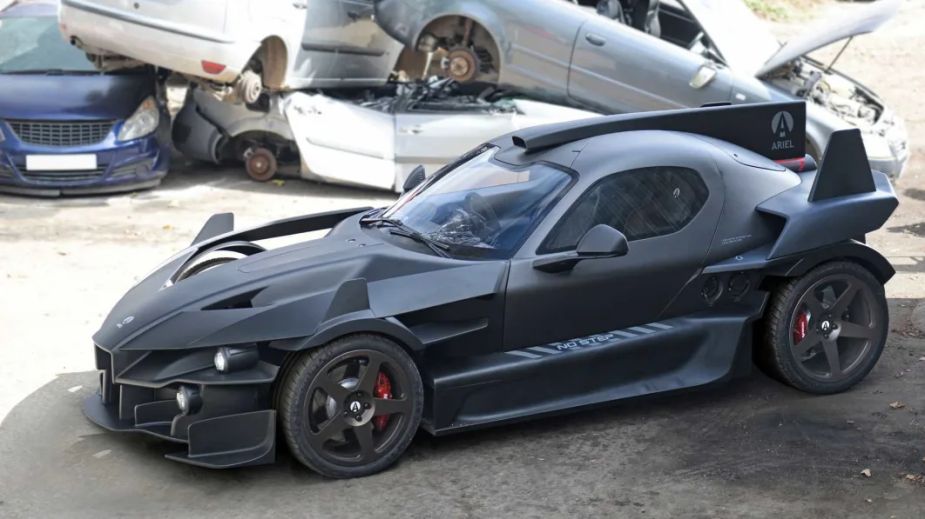
Different versions will be available, but the range-topper is an all-wheel drive system with two motors at each end. Each of the motors spins a single-speed transmission and integrates torque vectoring. Combined, the EV cranks out 1,180 hp and 1,342 lb-ft of torque.
Weighing under 3,500 lbs, this thing should fly. It can sustain 20 minutes of racetrack runs on a single charge.
How does the gas turbine engine work?
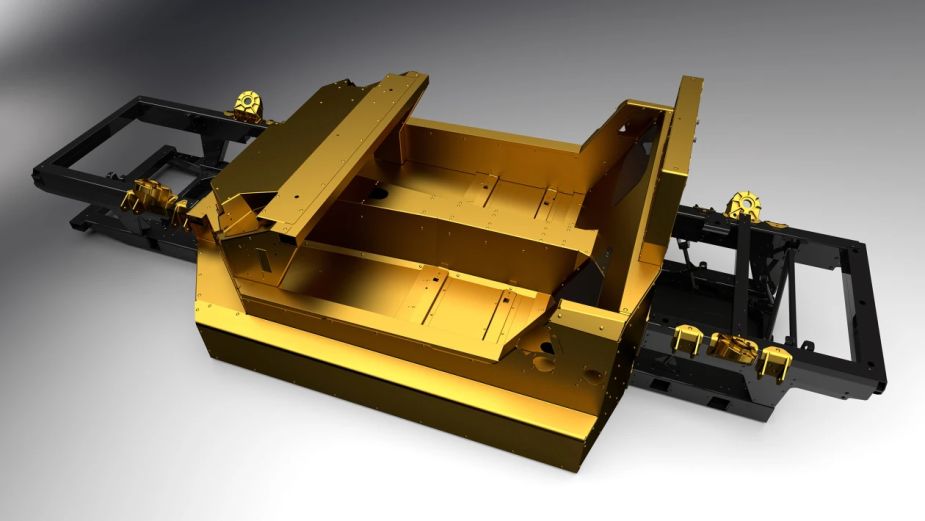
The motors get their juice from a 56 kWh lithium-ion battery. With that, you get over 150 miles of range. But helping to substantially increase range is that gas-turbine extender. In other words, a small jet engine. It comes via Cosworth’s off-the-shelf CatGen turbine engine.
It only puts out 47 hp, but this system should make for a substantially increased range, though no published figures are available now.
With all of this, the four-motor version sees zero-to-60 mph time at two seconds. Its zero-to-100 time is 4.4 seconds. The top speed comes in at 155 mph. Its two-motor sibling has 581 hp and 664 lb-ft of torque.
What’s the rest of the Ariel Hipercar like?
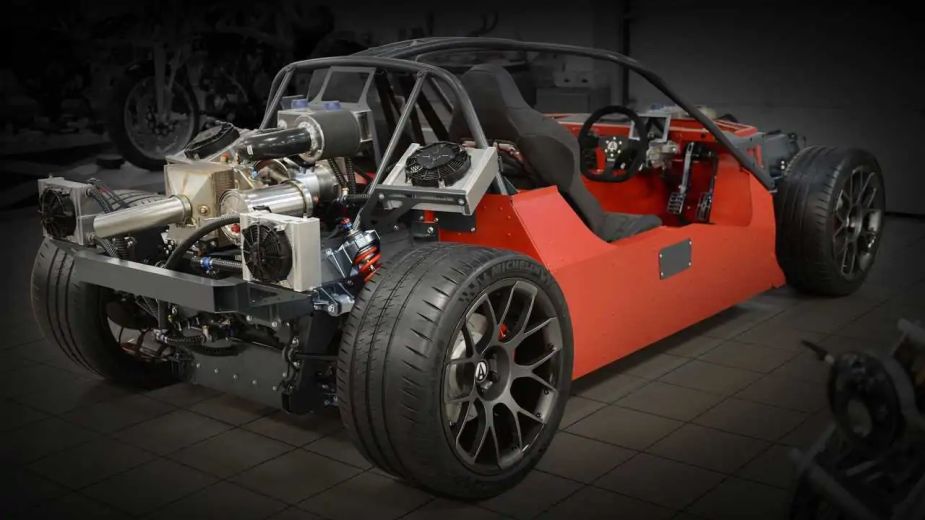
The chassis is racing-style bonded-aluminum monocoque, with aluminum front and rear subframes. A double-wishbone suspension incorporates Bilstein dampers. A choice of either forged or carbon-fiber wheels with 265/35 hoops in the front and 325/30 tires in the rear. Its body, unconventional as it is, is carbon fiber. This is how production models will look as Ariel says the design is locked in.
The U.K. is funding various companies developing net-zero products, so Ariel has seen a sizeable amount of outside money. When questioning whether Ariel should be involved, evo.co reported a backer told Ariel head Simon Saunders, “You’re brilliant because you’re the worst case scenario. You want the most performance, least weight, highest range, you haven’t got any money for tooling, and you want it really cheap. So if we can satisfy you…”
Ariel expects the Hipercar to become available in 2024. As you can tell, it is pretty far along in its development. And the price? It’s estimated to be $1 million.
RELATED: Gas-Turbine Concept Cars That We Thought Would Take Over The Future
Related post url:



